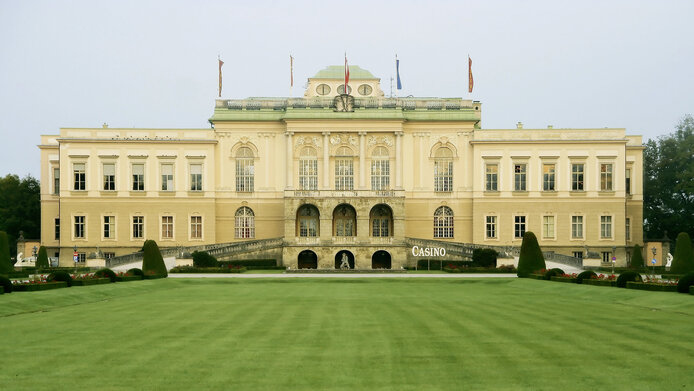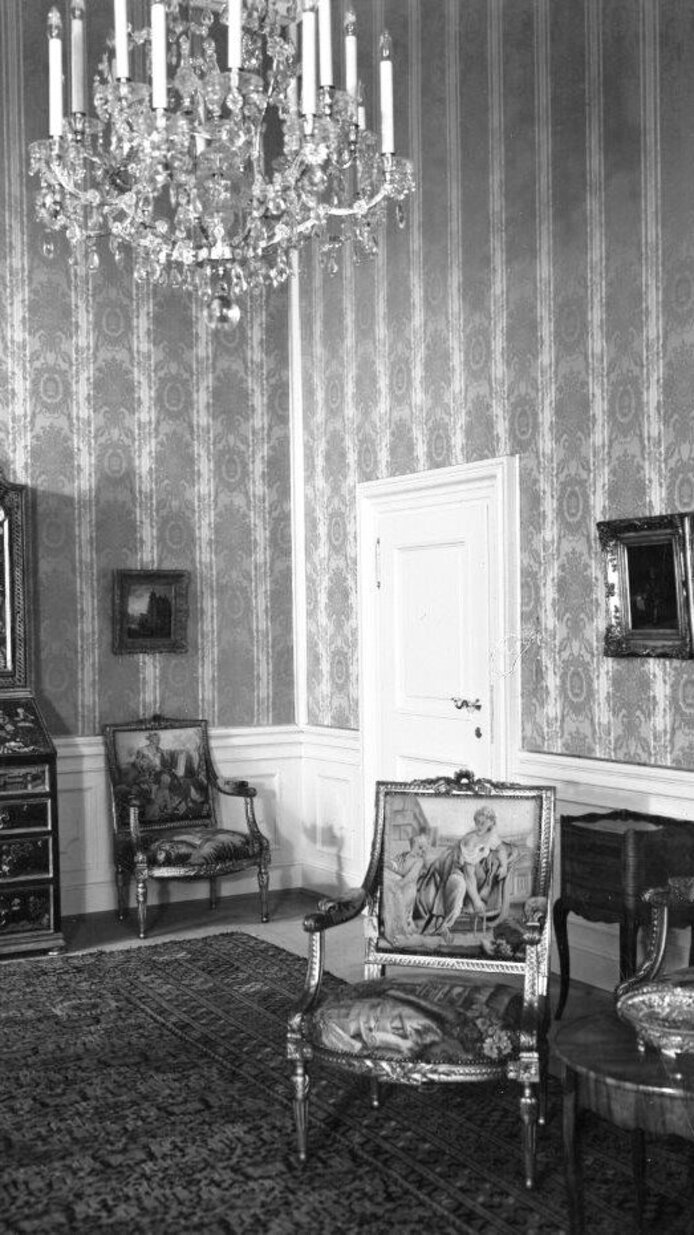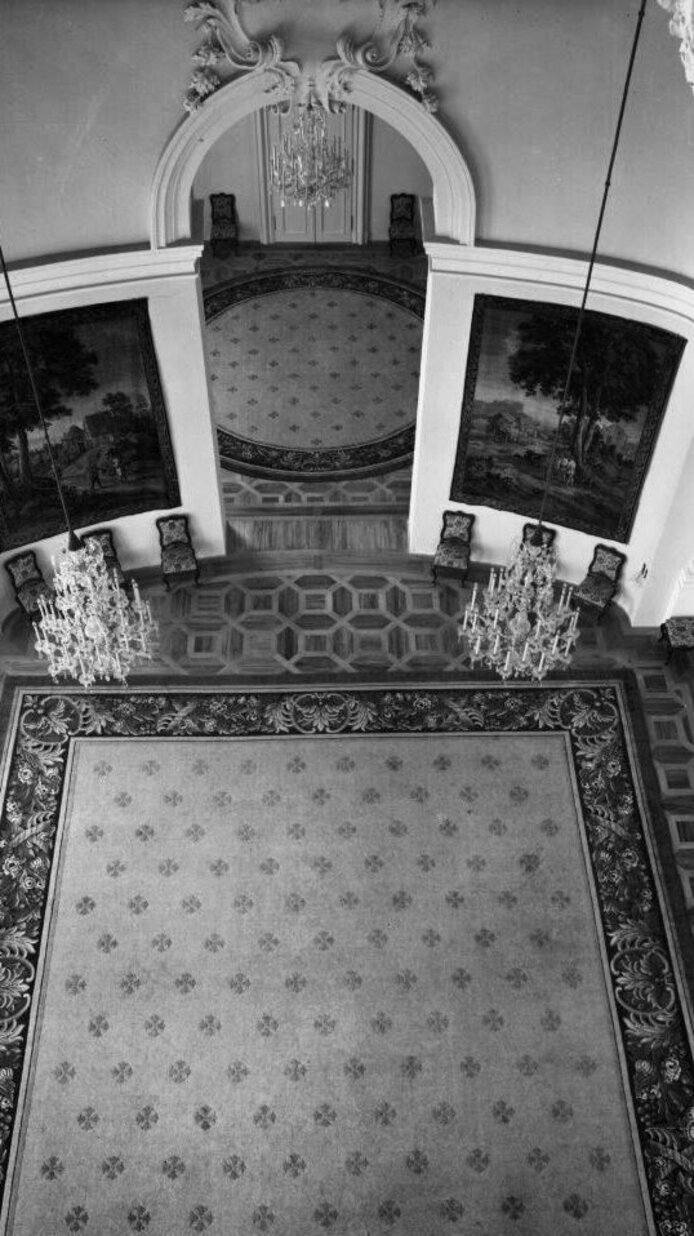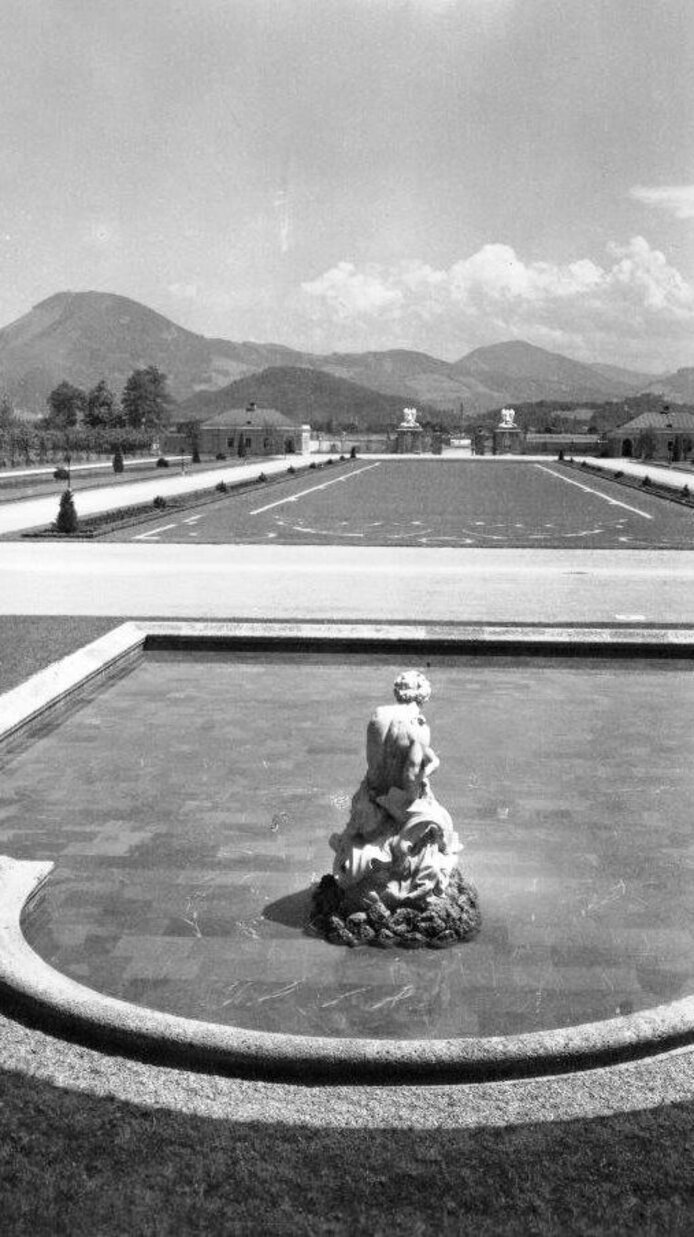The Führer’s lavish guest house

Klessheim Palace in Salzburg owes a great deal of its current appearance to conversions made during the period of National Socialism (NS). Upon instructions from Adolf Hitler, it underwent state-of-the-art refurbishment to serve as a prestigious “guest house of the Führer”. In the process, the interior of the former Baroque hunting lodge was decorated opulently in line with Nazi aesthetics. Money and labour were no object, since “the refurbishment was categorised as ‘important to the war effort’ and given the highest priority”, as Imma Walderdorff relates in the interview with scilog.
Nazi history in Klessheim
In a three-year research project funded by the Austrian Science Fund FWF, the art historian undertook the first scientific investigation of a wealth of documents to study the furnishings, function and politico-cultural significance of the palace complex that played an important role during the NS period. “Compared to other structures used by the NS leadership for entertaining, Klessheim is certainly unique because of the massive refurbishments”, explains Walderdorff. She notes that the palace and the surrounding grounds exemplified in a special way a demonstration of power and ostentation of supposedly superior taste. Monumental sculptures of eagles crowned the entrance gates, for instance, and the palace had its own railway station. All Nazi luminaries came together at Klessheim, and it was there that Hitler received like-minded politicians such as Benito Mussolini, Ion Antonescu from Romania or the “Regent of the Kingdom of Hungary” Miklós Horthy. In her effort to gather comprehensive data on the history of the palace, Imma Walderdorff vetted international archives in Berlin, Koblenz, Munich, Paris and Washington, talked to knowledgeable interlocutors such as descendants of artists involved and inspected holdings in the inventory of the Land of Salzburg the current owner of the palace. She also received assistance from provenance researchers worldwide (including from the USA, Germany, Poland, Czech Republic, France), making surprising discoveries in the process. She learned, among other things, that the lion’s share of furnishings for the palace was not supplied by the art dealer Friedrich Welz from Salzburg, but that an unknown Berlin-based businessman, Arthur Heinrich Kreiser, was the main source of furniture, paintings, rugs and decorative objects.
Wartime purchases and vanished depots
Among the objects archived by the Land of Salzburg, the researcher was able to identify 20 paintings as being wartime purchases. Only one of them was acquired via Friedrich Welz, the other 19 coming through Arthur H. Kreiser. It is not known where the paintings came from and who their owners were. Many of the paintings are still used by the Land of Salzburg. Delivery lists with inventory numbers suggest that Kreiser had a large storage depot for trading in antiques and works of art. The highest inventory number found in Klessheim is 46,277. – The findings raise many questions for provenance research: what sort of a depot was this? Where did Kreiser get his goods and where did they end up? Imma Walderdorff identified pieces of furniture and Asian vases as wartime purchases from Berlin, and she found lost miniatures from the famous Czernin collection that had been stolen from the Lauffen salt mine near Bad Ischl and were stored temporarily in Klessheim after having been accidentally rediscovered in Salzburg. In addition, the art historian was able to refute the opinion held by the Salzburg authorities that other paintings had previously been owned by the archbishopric. As she could demonstrate, the paintings were loans from Viennese museums arranged by Joseph Goebbels to decorate Klessheim Palace as a residence for the summer festival season even before it was refurbished as a guest residence.
Important contribution from basic research
With the valuable new insights gained in the course of the FWF-funded project, Walderdorff not only made an essential contribution to investigating Nazi looting and art deals. Her comprehensive investigation of sources, both as regards the refurbishment and the furnishings with a focus on provenance issues, provides also the first documentation of the function and politico-cultural significance of this building used by the NS regime for representational purposes. Walderdorff has meanwhile become a member of the international research group for provenance research (Arbeitskreis Provenienzforschung) and contributes her expertise to the Austrian Federal Chancellery’s commission on provenance research as well as to the Land of Salzburg. The results of her research on “the Führer’s guest house” will appear in the autumn of 2017 as part of a series published by the Salzburger Landesarchiv.
Personal details In 2010, the art historian Imma Walderdorff completed her thesis on the Salzburg Residenz Palace at the University of Vienna. Before focusing on Klessheim Palace, Walderdorff investigated the history of the famous Czernin private collection. Her main research interests are issues of historical and politico-cultural significance as well as looted art (provenance research).
Publications








